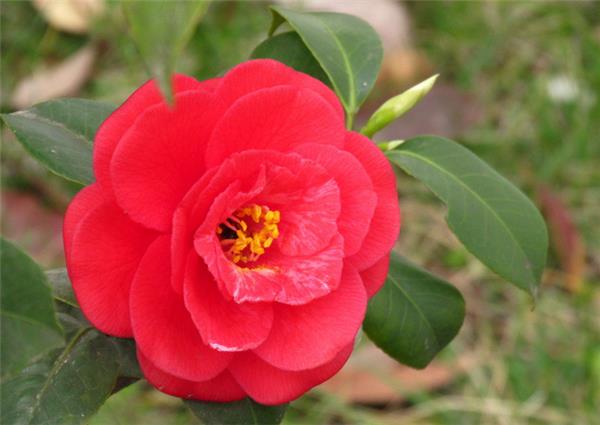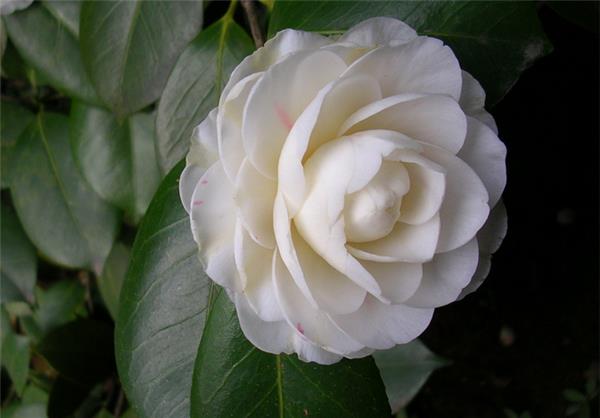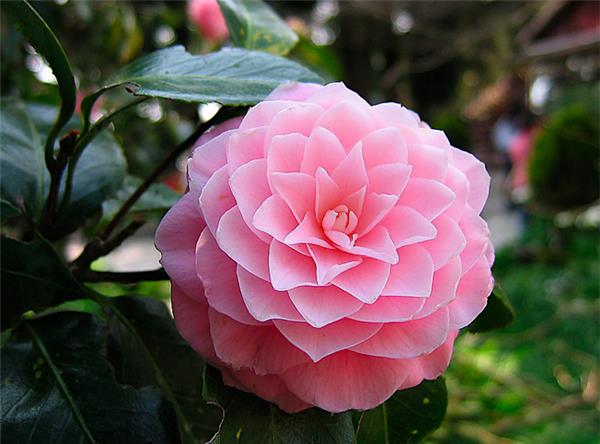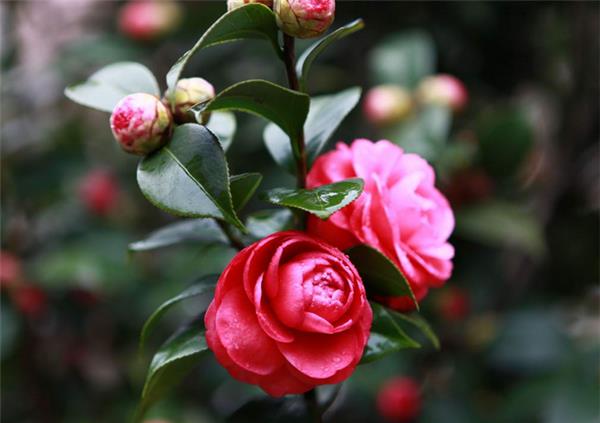How to cultivate Camellia
Camellia has always been a favorite flower, and the flowers are very bright, so do you know how to cultivate camellias?

How to cultivate Camellia
1. Place of placement: Camellia prefer semi-shade and avoid the scorching sun, so it is suitable to be placed in a warm, moist, ventilated and transparent place. Breed camellia in spring to have sufficient light, summer should pay attention to shade, avoid direct sunlight, if the camellia on the balcony, often accidentally it will be sunburned to death. Camellia in the process of storage and transportation, it is necessary to prevent high temperature and air drying, otherwise buds and flowers are easy to fall off, affecting the quality.
2. Temperature: Camellia likes warm climate, the suitable growth temperature is between 18 and 25 ℃, the initial flowering temperature is 2 ℃, it is slightly cold-tolerant, the general variety can withstand the low temperature of-10 ℃ and summer heat, but more than 36 ℃ will inhibit its growth. The cultivation of camellia requires a certain temperature difference, and the best environmental humidity is above 60%. It can generally survive the winter naturally in the south of the Huaihe River, while the varieties of Camellia are slightly less resistant to cold.

3. Watering: Camellia bonsai culture should keep the soil moist, but not stagnant water, so as not to affect the growth when dry and wet. In general, more water can be properly watered in spring, which is conducive to sprouting and sprouting; in summer, it is best to spray foliar water, so that the leaves are drenched thoroughly, not hot water should be watered, and the high temperature before and after noon should be avoided; proper amount of water should be watered in autumn; it is appropriate to water around noon in winter and spray water every two or three days.
4. Fertilization: Camellia likes fertilizer, so pay attention to put a layer of base fertilizer in the basin soil, mainly phosphorus and potassium fertilizer, and the best fertilization is the mixture of rotten bone powder, hair, chicken feathers, rice chaff ash, poultry dung and calcium superphosphate. Usually, it is not suitable to apply too much fertilizer, generally apply 2 or 3 times of thin fertilizer from April to May after flowering, and apply a slightly thicker water and fertilizer in autumn and November. Camellia fertilizer pay attention to the proportion of phosphate fertilizer should be slightly larger, in order to promote the flowers colorful.
5. Pruning: Camellia grows slowly and should not be overpruned. Generally, long branches, disease and insect branches and weak branches can be cut off. If there are too many buds on each branch, you can sparse the flowers, leaving only 1 or 2 buds and keeping a certain distance, and the rest should be picked as soon as possible so as not to consume too much nutrients. In addition, it is necessary to pick the withered flowers in time, which can also reduce the consumption of nutrients, so as to facilitate the robust growth of camellia and form new flower buds.

6. Turning the pot: it is best to turn the pot once every two years, and the new pot must be one size larger than the old pot, which is beneficial to the root system development of camellia. The best time for turning the pot of camellia is in April in spring, of course, it can also be carried out in autumn. When turning the basin, combined with soil replacement, properly remove part of the hardened old soil, replace it with fertile, loose, breathable new culture soil, and first place a layer of base fertilizer.
7. pest control: the common diseases of camellia are black mold and anthracnose, which can be controlled by spraying 0.5 degree Bordeaux solution. Usually, management and careful maintenance should be strengthened to enhance plant disease resistance and reduce the chance of infection. If the cultivation of camellia is not well ventilated, it is very easy to suffer from pests such as red spiders, tea tip moths and shell insects. This kind of pest control method is to cut off the insect tips, which is generally carried out from April to June. It can also be sprayed with 1000 times omethoate EC to control or wash clean.

Matters needing attention in Camellia Culture
Camellia is not suitable for intensity pruning, its flowers, leaves, buds develop for a long time, and the crown is formed evenly. Basically, there is no need for special pruning, just cut off disease and insect branches, over-dense branches, weak branches and truncated long branches.
Camellia is a multi-flowered tree species, especially on weak plants, if the buds are dense, it will consume too many nutrients, which is disadvantageous to the plant growth. Therefore, bud picking is an important part of cultivation and management, it is appropriate to leave 1 bud and 2 buds on each branch, only 3 buds at most, and keep a certain distance. The sparse buds can be used medicinally.
The flowering period of camellia is longer, and the whole flowering period is as long as half a year. Therefore, picking close to withered flowers in time is of great benefit to reduce nutrient consumption and enhance the tree potential.
Related
- Wuhan Hospital Iron Tree Blooming Result Was Instantly Frightened by the Gardener Master
- Which variety of camellia is the most fragrant and best? Which one do you like best?
- What is the small blue coat, the breeding methods and matters needing attention of the succulent plant
- Dormancy time and maintenance management of succulent plants during dormancy
- Minas succulent how to raise, Minas succulent plant pictures
- What are the varieties of winter succulent plants
- How to raise succulent plants in twelve rolls? let's take a look at some experience of breeding twelve rolls.
- Attention should be paid to water control for succulent plants during dormant period (winter and summer)
- Watering experience of twelve rolls of succulent plants
- Techniques for fertilizing succulent plants. An article will let you know how to fertilize succulent plants.



